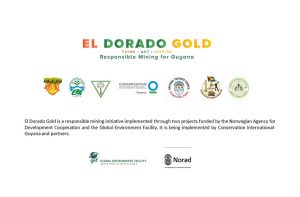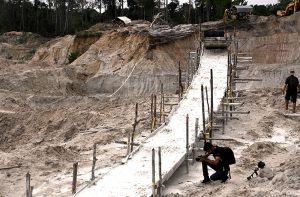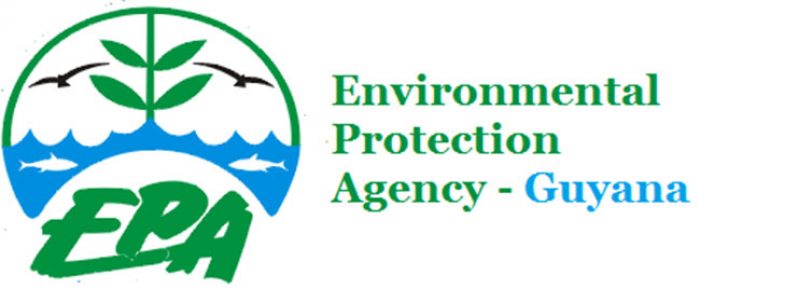MARBEL Thomas is the Toshao of Campbelltown – an indigenous village on the outskirts of Mahdia. She wants her village to lead the way in practising sustainable mining.
 “This is our vision for our village. We want to practice mining in a way that has minimum impact on the environment and is safe for people, so that we can continue to earn a living to take care of our families,” she said.
“This is our vision for our village. We want to practice mining in a way that has minimum impact on the environment and is safe for people, so that we can continue to earn a living to take care of our families,” she said.
In early September, she took the group of partners implementing the El Dorado Gold – Responsible Mining for Guyana initiative to her village to meet with councillors and other residents.
About 10 minutes outside of Mahdia, small to medium mining sites are visible from the sky. Mining is the main source of income for Campbelltown and Mahdia. Even before villagers began mining, Campbelltown earned profits by granting permission to non-residents for mining of small concessions.
Campbelltown miners operate at a small-scale. Thomas said there is very little awareness of the impacts of using mercury in the mining process. “We don’t know anything about mercury, but we want to learn,” she said. “We want to educate our miners.”
There are ponds at the old mining sites where residents sometimes fish. “We catch them, we eat them and it’s normal for us to do this. If mercury use at these mined-out sites could possibly affect our health, then we need to know, and we’ll want to change this,” Thomas said.
While she does not remember any “out-of-the-ordinary” cases of sickness, the village leader believes that it is better to be careful than take unnecessary risks.
RESTORATION OF MINE SITES
“I would like to see our village restoring mining sites. We’ve looked at a few and are thinking about whether we can plant potatoes there or something else to see if it will grow,” she explained.
 During a short visit the St. Elizabeth mining site, the team also saw one of the Guyana Geology and Mines Commission’s restoration sites. Since 2010, efforts have been made to plant Acacia mangium in areas that have been heavily mined to promote the return of surface vegetation and stabilise the soil. Over time, it is hoped that by planting this species the area will undergo natural succession resulting in secondary forest cover.
During a short visit the St. Elizabeth mining site, the team also saw one of the Guyana Geology and Mines Commission’s restoration sites. Since 2010, efforts have been made to plant Acacia mangium in areas that have been heavily mined to promote the return of surface vegetation and stabilise the soil. Over time, it is hoped that by planting this species the area will undergo natural succession resulting in secondary forest cover.
Vincent Xavier, a resident who has been mining since 1992, believes there are many challenges which the small miner faces. “Financially we don’t have the support that we need,” he said. The price of equipment, fuel and other supplies are high. Support in financing and learning ways to increase production are key needs of the small miner.
Both Thomas and Xavier look forward to finding innovative ways to reduce the impact of mining on nature and people while increasing production and profit for miners.
El Dorado Gold encourages actions around responsible mining for Guyana. The initiative encompasses a Global Environment Facility (GEF) and Norwegian Agency for Development Cooperation (NORAD). The GEF component of the initiative seeks to guide the switch to mercury-free mining and promote adoption of environmentally-friendly approaches to mining in Guyana’s artisanal, small and medium-scale gold mining (ASGM) sector.



.jpg)









